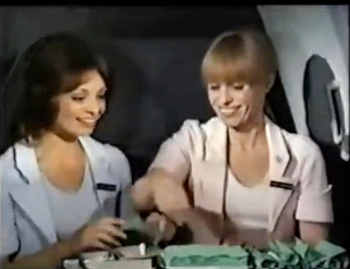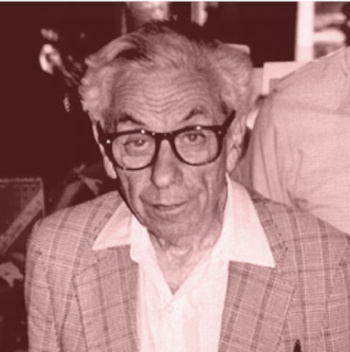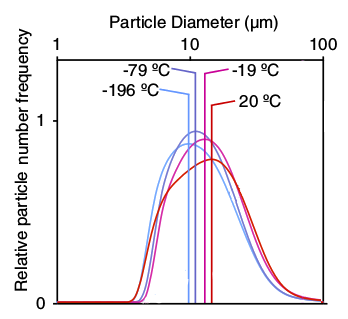Coffee and Tea
March 25, 2024
Women were
sex objects well into the
1970s.
Flight attendants were exclusively women; and, before
laws were enacted to prevent
employment discrimination, the requirements for a flight attendant were quite specific.
A high school graduate, single (widows and divorcees with no children considered), 20 years of age (girls 19 1/2 may apply for future consideration). 5'2" but no more than 5'9", weight 105 to 135 in proportion to height and have at least 20/40 vision without glasses.[1]
The
perceived flight attendant
culture of that period is expressed in the
entertaining 1973
made-for-TV movie,
Coffee, Tea or Me?, based on the
book of the same title.[2-3]

Karen Valentine as Carol Burnham-Byrnes and Louise Lasser as Susan Edmonds in Coffee, Tea or Me?
(Still image from a YouTube video.[2])
An
intangible benefit of
coffee is its ability to
jump-start a person's
working day, with a possible
benefit to the
gross domestic product (GDP). More tangible is the precise
economic impact of the
coffee industry. In 2022, coffee's impact on the
United States GDP was $343.2 billion.[4] The U.S. coffee industry
employs 2.2 million people, generating more than $100 billion in
wages.[4]
Consumers spent nearly $110 billion on coffee in 2022.[4]
Since
scientists have done many
experimental studies on the
physics and
chemistry of coffee, this
blog has featured several articles about coffee.
• Coffee Rings, December 10, 2010
• Coffee Rings (Part II), August 25, 2011
• Coffee Thermodynamics, June 17, 2011
• Caffeine-Resistant Bacteria, January 7, 2016
• Coffee Break, August 8, 2016
• Coffee Acoustics and Espresso Foam, October 31, 2016

Mathematician, Paul Erdős (1913-1996).
Since he consumed large quantities of coffee, Erdős is often cited as the source of the quotation, "A mathematician is a device for turning coffee into theorems." This quotation is believed to have originated with another prominent mathematician, Alfréd Rényi (1921-1970).
(Wikimedia Commons image, modified for artistic effect.)
Coffee shops have become a
popular way to get coffee, but it's more
economical, and perhaps more
environmentally friendly, to make coffee at home. At home, I use a
Bunn drip coffeemaker, which is a step up from the typical
home coffeemaker. I use
whole coffee beans that I
grind myself. I
store the beans in the freezer to keep them fresh, and research has shown that there's another reason why you should keep the beans cold before grinding.[5] Cooling a
material often makes it
brittle, and this is true for coffee beans, giving smaller
particles (see graph).[5]

Ground coffee particle size distribution at various temperatures.
Note the logarithmic scale.
(Portion of Fig. 4a of Ref. 5, licensed under a Creative Commons Attribution 4.0 International License.[5]
A 2014 study examined the role of
dissolved cations in coffee
extraction, particularly
dissolved Na+,
Mg2+, and
Ca2+.[6] The object of the study was to determine the ideal
mineral composition of
water for extraction of
flavor compounds in coffee.[6] This cation factor is known in the coffee
industry, and an ionic concentration of 150-300
parts per million (ppm) is generally recommended for coffee extraction. Aside from extraction, a pinch of
table salt is often added to coffee to reduce
bitterness by acting on the
taste receptors of the
tongue. I once noticed that the
sugar packets in a
diner were
labelled as also containing salt.
Contrary to
stereotype,
Britons consume about twice as much coffee as
tea.[7] Coffee is also more popular worldwide than tea.[7] Some
Internet websites indicate that tea is the more popular drink, possibly based on outdated
statistics. According to the
British Coffee Association, about two billion cups of coffee are
consumed worldwide each day.[7]
There have been fewer scientific studies on tea than coffee. The first tea study, "On the Infusion of Tea," was
published in 1885 by the woman
chemist, Wilhelmina Green.[8] Another woman chemist,
Bryn Mawr College chemistry
professor,
Michelle Francl, has just
published a
book, "Steeped: The Chemistry of Tea," that summarizes tea science.[9-10] The book was released on January 24, 2024.[11] Francl is also an
adjunct scholar of the
Vatican Observatory.[11]
Emmy Noether(1882-1935), an eminent mathematician and
mathematical physicist, taught at Bryn Mawr from 1933 until her death in 1935.
Although Francl's
parents were both coffee drinkers, she's been drinking tea since she was twelve years old.[11-12] She became interested enough to write her book when she noticed a
tweet from a fellow chemist who asked whether a
tetrahedral tea bag makes a better cup of tea than the standard tea bag.[11] Francl says that she tried to write the book to be accessible to non-chemists; and, her
sister, who had never taken a
course in chemistry said that "
her eyes didn't glaze over" while reading the book.[11] Francl says that
black Assam tea, with a lot of
sugar. is her favorite tea, and that she enjoys the slow
ritual of tea brewing involving
boiling the water and waiting for the tea to
infuse before drinking.[11]
One interesting tea fact is that
black tea,
green tea, and other teas differ not because of the plant species, but in the
production process.[11] Tea is a cultural institution in the
United Kingdom, and an estimated 100 million cups of tea are made there daily.[12] Francl says that she's "...had better cups of tea in
gas stations in
Ireland than... in really
fancy restaurants in the U.S."[11] The main problem with restaurant tea is that the water is too cold for a good infusion. Hotter water releases more
caffeine and
aromatic compounds.[11]

Structural diagram of caffeine.
The US Food and Drug Administration (FDA) classifies caffeine as generally safe, with a recommended limit of 400 milligrams per day for a healthy individual. An eight ounce cup of coffee has about 100 milligrams of caffeine. Black tea has about 50 milligrams, and green tea has about 30 milligrams.
Caffeinated soft drinks can contain about 5 milligrams of caffeine per ounce, or about the same per ounce as coffee. Energy drinks can have more than 75 milligrams of caffeine per serving. The toxic dose of caffeine is more than ten grams (10,000 milligrams) in a day.
(Wikimedia Commons image by NEUROtiker. Click for larger image.)
One tea
mystery that Francl writes about is the white
film that appears on the
surface of brewed tea if the water is heated in a
microwave oven. This is related to the water's
dissolved oxygen, which is removed in
stovetop boiling, but not in microwave heating.[11-12] The oxygen
reacts to form
magnesium and
carbonate precipitates of the tea
chemicals, but adding
lemon juice will prevent this reaction.[11] Francl also suggests adding a little salt, for the same reason as adding salt to coffee.[12] This is against British custom, and the
Embassy of the United States, London, has released a perhaps
humorous response that this technique is not official United States
government policy.[12]
References:
- Michelle Higgins, "63 Years Flying, From Glamour to Days of Gray," New York Times, March 17, 2012.
- Coffee, Tea or Me? (1973), YouTube video by Terry Dawson, May 1, 2017.
- Trudy Baker, Rachel Jones, and Donald Bain, "Coffee, Tea or Me? The Uninhibited Memoirs of Two Airline Stewardesses," Penguin Books (paperback reissue edition, June 3, 2003), 320 pp., ISBN: 978-0142003510 (via Amazon).
- The NCA U.S. Coffee Impact Report, National Coffee Association of U.S.A., Inc..
- Erol Uman, Maxwell Colonna-Dashwood, Lesley Colonna-Dashwood, Matthew Perger, Christian Klatt, Stephen Leighton, Brian Miller, Keith T. Butler, Brent C. Melot, Rory W. Speirs & Christopher H. Hendon, "The effect of bean origin and temperature on grinding roasted coffee," Scientific Reports, vol. 6, article no. 24483 (April 18, 2016), doi:10.1038/srep24483. This is an open access article with a PDF file here.
- Christopher H. Hendon, Lesley Colonna-Dashwood, and Maxwell Colonna-Dashwood, "The Role of Dissolved Cations in Coffee Extraction," Journal of Agricultural and Food Chemistry, vol. 62, no. 21 (May 28, 2014), pp. 4947-4950, DOI: 10.1021/jf501687c.
- Coffee beats tea as Britain's favourite beverage, research suggests, itv.com, August 21, 2023.
- Wilhelmina Green, "On the Infusion of Tea," Chemical News, vol. 6 (November 6, 1885), pp. 229-31 (Via the Internet Archive)
- Michelle Francl, "Steeped: The Chemistry of Tea 1st Edition," (Royal Society of Chemistry, January 24, 2024), 240 pp., ISBN:978-1839165917 (via Amazon).
- Chapter 1: A Cup of Chemistry, excerpt of ref. 9, Royal Society of Chemistry, DOI:https://doi.org/10.1039/9781837670383-00001.
- Nate File, "How science can help you make a better cup of tea and why a Bryn Mawr scientist wrote a book about it, Philadelphia Inquirer, January 19, 2024.
- James Gregory, "US scientist recommends adding salt to make perfect cup of tea," BBC News, January 24, 2024.
Linked Keywords: Woman; women; sexual objectification; sex object; 1970s; flight attendant; law; employment discrimination law in the United States; high school; graduation; graduate; single person; widow; divorce; divorcee; child; children; age; girl; weight; proportionality (mathematics); proportion; height; visual acuity; 20/40 vision; glasses; perception; perceived; culture; entertainment; entertaining; television film; made-for-TV movie; Coffee, Tea or Me? (film); Coffee, Tea or Me? (book); Karen Valentine; Louise Lasser; YouTube video; intangible asset; intangible benefit; coffee; jump-start; workweek; working day; benefit; gross domestic product (GDP); economics; economic impact; economics of coffee; coffee industry; economy of the United States; United States GDP; employment; employ; wage; consumer; scientist; experiment; experimental; research; study; physics; chemistry; blog; Coffee Rings; Coffee Thermodynamics; Caffeine-Resistant Bacteria; Coffee Break; Coffee Acoustics and Espresso Foam; mathematician; Paul Erdős (1913-1996); Coneheads; consumed large quantities; quotation; theorem; Alfréd Rényi (1921-1970); Wikimedia Commons; coffeehouse; coffee shop; mainstream; popular; economical; environmentally friendly; Bunn-o-Matic Corporation; drip coffeemaker; home; whole coffee beans; grinding; grind; storage; freezer; material; brittleness; brittle; particle; particle size distribution; logarithmic scale; Creative Commons Attribution 4.0 International License; dissolution (chemistry); dissolve; cation; extraction (chemistry); solution; sodium; Na+; magnesium; Mg2+; calcium; Ca2+; mineral; chemical composition; water; aroma compound; flavor compound; industry; parts-per notation; parts per million; table salt; bitterness; taste receptor; tongue; sugar packet; diner; food labeling regulations; stereotype; British people; Britons; tea; Internet; website; statistics; British Coffee Association; consume; scientific literature; published; chemist; Bryn Mawr College; professors in the United States; Michelle Francl; academic publishing; book; visiting scholar; adjunct scholar; Vatican Observatory; Emmy Noether(1882-1935); mathematical physics; mathematical physicist; parent; Twitter; tweet; tetrahedral; tea bag; sibling; sister; course (education); boredom; black Assam tea; sucrose; sugar; ritual; boiling; infusion; infuse; black tea; green tea; tea processing; production process; United Kingdom; filling station; gas station; Ireland; fancy; restaurant; caffeine; aromatic compound; structural formula; structural diagram; caffeine; US Food and Drug Administration (FDA); food safety; safe; milligram; day; health; healthy; fluid ounce; caffeinated soft drink; energy drink; toxic dose; gram; NEUROtiker; mystery; coating; film; surface; microwave oven; oxygen; cooktop; stovetop; chemical reaction; react; magnesium; carbonate; precipitation (chemistry); precipitate; chemical compound; lemon juice; Embassy of the United States, London; humor; humorous; government policy.